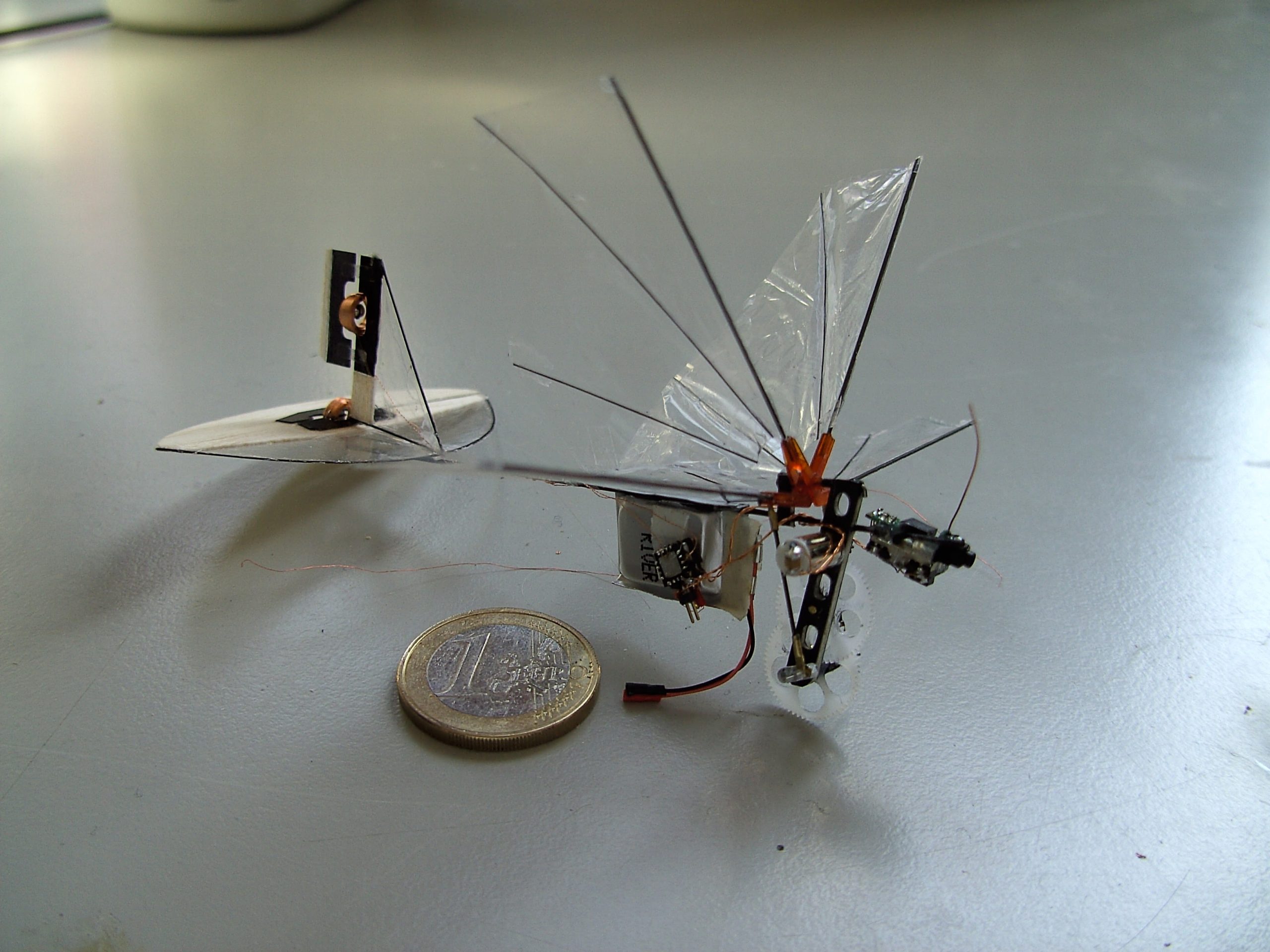Two PhD students will try to figure out how to let micro aerial vehicles steer with their wings instead of a tail, just like insects do.
‘To be as nimble as a bee’ is the title of an STW grant that was recently awarded to researchers of the Delft Micro Aerial Vehicle Lab (MAV lab) and Wageningen University. The grant will allow one PhD researcher in Delft and one in Wageningen to work together on mimicking nature, more specifically on copying techniques that allow insects to perform their aerial acrobatics.
“Researchers are frantically looking for ways to make MAVs steer with their wings,” says MAV researcher Dr Guido de Croon of the Aerospace Engineering faculty. “There is a race going on in our field of research. Harvard University developed the Robobee, but it can’t fly independently. The Robobee needs such a high voltage that for now it is externally powered and connected to a ground-based battery with wires. And then there is DARPA’s Nanohummingbird. This robot is also far from perfect. It is a very complex machine.”
A tail to steer
Many flying robots have a tail to steer. This makes them extremely susceptible to gusts of wind. Take TU Delft’s famous MAV Delfly, that flaps its wings like a dragonfly. This little flying machine performs nicely inside buildings. But once outside, the wind makes it practically impossible for it to manoeuvre.
“With Delfly we cannot properly fly in urban areas, pass from indoor to outdoor spaces, and fly close to obstacles”, says De Croon. “That is why we are working on a highly-manoeuvrable flapping wing MAV inspired by natural flyers that is equipped with wing-based control actuation.,”
‘We will study gust control in bees and blowflies ’
“Biological flyers that both power and control flight with their flapping wings greatly outperform current, mostly rotor-based, MAVs in manoeuvrability. This is largely due to dedicated sensory systems and fast and effective control actuation: manoeuvres are initiated by a small change in wing motion instead of rotors that need to spin up or down.”
“Using the experimental techniques and biomechanical knowledge available at Wageningen University, we will study gust control in bees and blowflies, importantly, two insect species that have different sets of sensory systems.”
The researchers want to reverse-engineer the sensory-motor control system for gust rejection in insects. At the end of the four year project, they hope to have developed a prototype of a tailless flapping-wing MAV controlled by insect-inspired algorithms, capable of both hovering and fast forward flight, and with good manoeuvre characteristics in gusty environments.
Also read:
Delfly ventures out of the lab
Building a better bug
Do you have a question or comment about this article?
tomas.vandijk@tudelft.nl


Comments are closed.